A history of the car head unit
Cars didn't always have touchscreens to control music
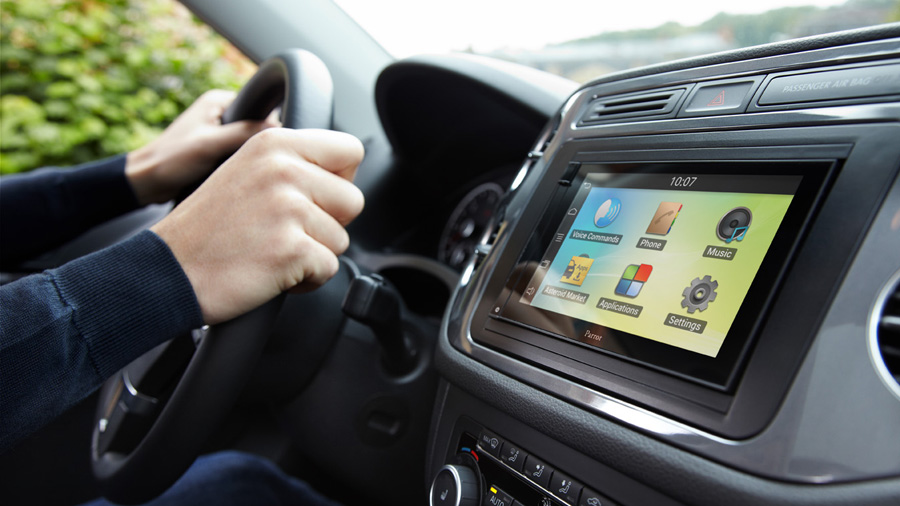
The car head unit is quickly growing synonymous with a touchscreen powered by either Android Auto or Apple CarPlay. However, it's important to remember that in-car entertainment wasn't always this convenient and colorful.
In fact, some of you might remember a device that went by the name of the CD player. Or, if you're particularly mature, you might even remember the humble cassette player. After some research, I found that, apparently, there were even different types of head units before the tape player.
Here is a history of the car head unit that shows exactly how far our in-car technology has come.
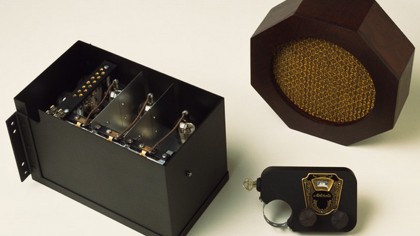
1930s: the mono AM radio
While auto enthusiasts had been trying to fit AM radios into cars for around a decade up to this point, it wasn't until the 1930s that the technology was introduced on a consumer level. Motorola, then called Galvin Manufacturing Corporation, offered the radio itself, and it retailed for around $130 (about £86, AU$184).
Sounds about right, you say? Well, this was the '30s, and $130 (about £86, AU$184), adjusted for inflation, was today's equivalent of around $1,800 (about £1,186, AU$2,554). A whole car could be purchased for three times the price of just the head unit at the time.
The technology was made possible due to the fact that Galvin Manufacturing purchased a battery eliminator business. This led to the creation of a battery eliminator for vacuum tube radios, allowing the radios to run on a standard home electric current.
In fact, the name Motorola was created when the company started making car radios. The name was derived from "motor" and "victrola," which was another name for a phonograph.
Get daily insight, inspiration and deals in your inbox
Sign up for breaking news, reviews, opinion, top tech deals, and more.
The AM radio remained the standard music player in the car for around two decades.
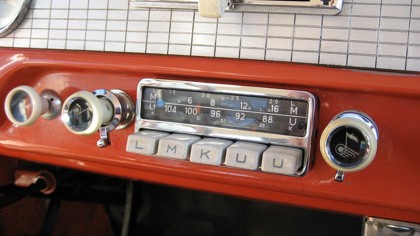
1952: the FM radio makes its debut
By this point, AM radio units for cars became significantly cheaper since they were released, but they weren't yet capable of receiving FM transmissions. Of course, FM radio wasn't yet that popular, which might be a little hard to imagine.
However, some companies could tell that it would soon become another standard. Germany-based Blaupunkt was the first company to offer an AM/FM radio, which was first made available in 1952. But bear in mind this was quite a while before FM radio caught on as a popular medium.
In the '50s, companies also experimented with in-car record players. Due to their size and the fact that bumps would cause skips in the audio, companies soon realized that in-car record players weren't viable.
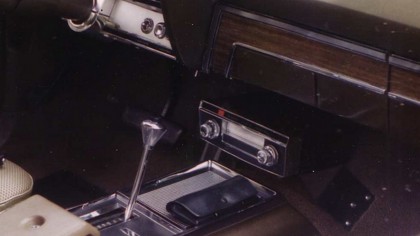
1960s: the car stereo and in-car 8-track are introduced
Modern music is in stereo (technically known as stereophonic), meaning that there are two streams of audio, one for the left, and the other for the right. This allows musicians and music producers to create a "field" of audio, with, perhaps, a particular guitar found on the left channel and a set of backup vocals on the right.
Until the 1960s, however, audio was in monophonic (popularly known as "mono"), meaning it was one stream of audio, and left or right channels didn't matter. Experimentation with stereo music was made famous with bands like The Beatles and albums like Jimi Hendrix's "Axis: Bold As Love."
The first "stereo" systems in cars placed one stream of audio in the front and the other in the back, though left and right systems soon developed. The first car stereo was made by another German company, Becker, and was called the Europa, released in 1969.
The 8-track also made an appearance in the car, and was popularized because of its use in said cars. Ford pushed 8-track systems particularly hard, and other car manufacturers caught on in an attempt to compete before they quickly grew obsolete.
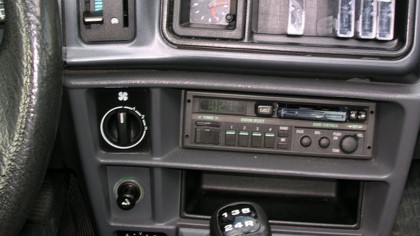
1970s: the cassette tape emerges
Car manufacturers might have wanted to compete with 8-track systems, but the 8-track was soon replaced with a newer technology: the cassette tape.
The first tape deck units were actually pretty hard on the tapes themselves. A Japan-based company called Maxell even based an ad campaign on saying that its tapes could stand the abuse delivered by driving with tapes in the tape player.
The rise of the cassette tape was actually largely owed to its use in the car. This is because people enjoyed how compact the tapes were, meaning multiple could fit in the glove compartment to be listened to at any time, assuming that they didn't get stuck in the tape deck.
Today, many cars still use cassette tape-based systems. There are even "tapes" available that have a 3.5mm jack cable, which extends out of the tape deck and can be plugged into a device, such as a smartphone.
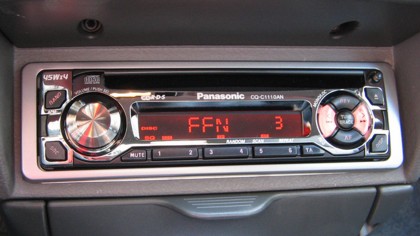
1990s: CDs take over
Now we're getting into territory that some of us might actually remember. While CD technology was first introduced in the '80s and some car manufacturers tried to introduce it in their cars, the technology didn't really take off until the late '90s, as far as car head units go.
This was especially amplified by CD players that were able to read CD-RW discs, as well as those that could read MP3 files. DVD functionality even appeared late in the decade in some high-end cars, further pushing the idea that disc technology was superior.
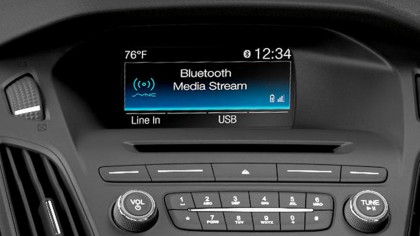
2000s: Bluetooth head units and infotainment systems appear
At the start of the new millennium, technology companies began making use of Bluetooth as a way to transfer and stream files, and in-car was no exception. Bluetooth technology itself was first being worked on in 1994, however it didn't really take off until after the turn of the century. When it came to cars, the wireless signal tech was implemented for hands-free calling, and companies even developed a system in which a head unit would mute itself during a phone call.
Perhaps more important than Bluetooth, however, was the introduction of the in-car infotainment system, a touchscreen that had GPS capabilities. Some of these systems even offered storage space for users to store their files. Unfortunately, many of these systems were clunky and unreliable as far as touchscreen technology went, and they also performed slowly.
There were, of course, exceptions. Ford Sync was first introduced by Ford in 2007, and enabled users to make hands-free calls and control music simply through voice control. In many ways, this was a precursor to voice controlled systems like Android Auto. And, while the voice control wasn't as well developed as what Apple and Android introduced years later, it was certainly a nice touch, allowing drivers to largely focus on the road.
Since the mid-2000s, car manufacturers have also started allowing users to control their infotainment system through controls on the steering wheel. Most commonly, these controls are for volume control, track skipping on CDs or changing the radio station.
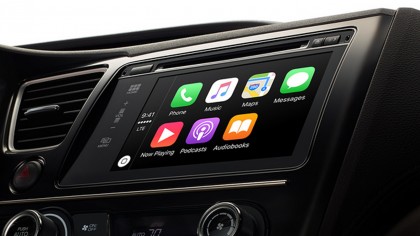
2010s: the future of the head unit
Since 2010, the head unit has improved in leaps and bounds, with both Apple and Google releasing their own in-car infotainment systems, CarPlay and Android Auto. These systems connect to your smartphone to play music, offer map navigation, and even use apps.
With an internet connection, whether it be through the smartphone or otherwise, cars not only offer entertainment and navigation, but they can also update the software in the actual car. Such is the case with newcomer automakers like Tesla, which has been able to even extend the range of its cars through simple software updates.
Car manufacturers won't stop there, however. As self-driving cars continue to develop, it is likely that the infotainment system will become the hub of the car, with you using it to tell your car where to take you. Voice control will also be implemented here, and drivers will continue to speak to their cars for tasks like music playback.
We envision a future in which a "driver" can lie down and take a nap as their car taxis them to their destination. Waking from the slumber, the driver can ask the car exactly how long it will be to the destination. After being told that it will only be a few more hours, they can tell the car to play their "sleepy time" playlist to help them fall back asleep. A bright future indeed.
Christian is a writer who's covered technology for many years, for sites including Tom's Guide, Android Central, iMore, CNN, Business Insider and BGR, as well as TechRadar.